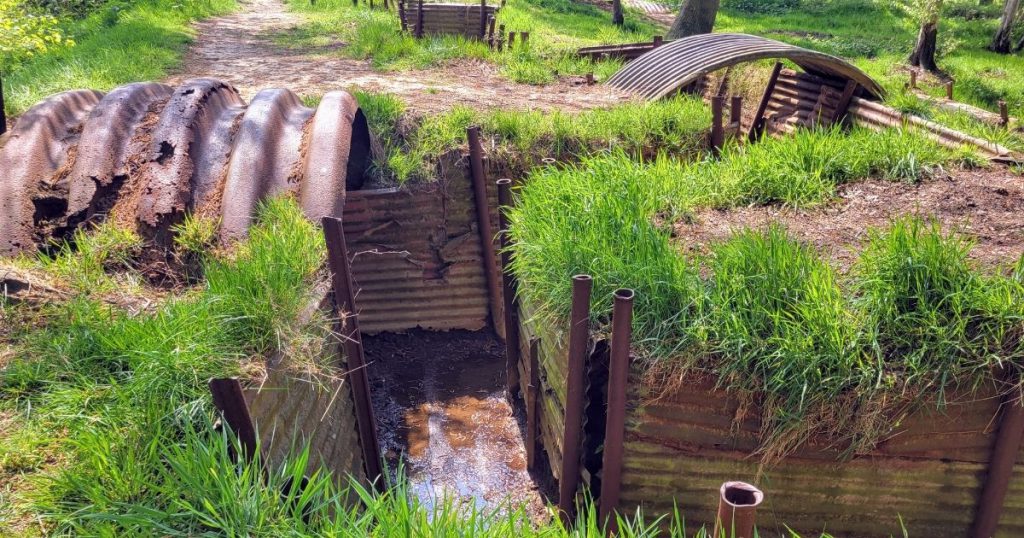This page may contain affiliate links, which means that we may earn from qualifying purchases at no additional cost to you.
A guide to the Ypres battlefields and sites you don’t want to miss on your trip!
Located in Southern Belgium near the border with France, Ypres (also known by its Flemish name, Ieper) is probably best known for being the site of some of the most prominent battles of WWI.
Due to it’s position on the French border, Ypres stood in the way of the planned German campaign to conquer Belgium. This small town is where Allied forces chose to make a stand to halt the German advance, resulting in a drawn-out conflict with tens of thousands of deaths.
On a visit today, you’ll find WWI cemeteries, battleground sites, trenches, and some excellent WWI museums.
Besides the WWI historic sites, Ypres is also a charming city that is lovely to visit in its own right. Located on the front line of the war, the city was completely destroyed during WWI. However, after the war the city was rebuilt in the original medieval and renaissance style. Today you can walk down charming cobblestone streets that look much as they did before the war.
Ypres was a last-minute addition to our itinerary on our trip to Belgium, and we were so glad that we chose to fit it in! We love history and visiting the battlefields and museums of Ypres was a truly fascinating and sobering experience.
There are a lot of amazing sights that you don’t want to miss while you’re in Ypres. In this post we’ll share the highlights so that you can plan an amazing trip! Read on for information about the Ypres battlefields, memorials and cemeteries, and other significant points of interest.
Ypres Battlefields
The Ypres battlefields are some of the most memorable and moving locations to visit on a trip to the region.
The area is often referred to as Ypres Salient, a salient being a military term used to describe an area that protrudes into enemy territory, leaving troops surrounded by the enemy on three sides. As the location of the Western front for much of the war, Ypres was a place of intense fighting and mass casualties during WWI.
As such, in this area you can still find many battlefields that are remnants of the brutal war that took place near this small town.
Yorkshire Trench and Dugout
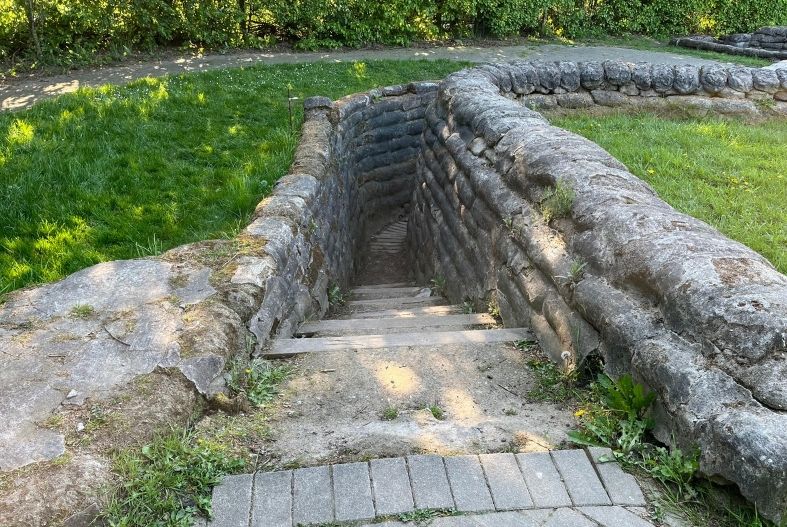

The Yorkshire Trench is a preserved section of the British trenches located near Ypres. This site was only rediscovered within the past 30 years. A group of amateur archeologists, referred to as “The Diggers” unearthed the dugout, an underground shelter that served as a military headquarters during the war. There were staircases leading down to the dugout, which was over 30 feet deep and included 11 side rooms.
You can’t enter the dugout today, as it’s filled with water and not open to visitors. However, you can walk along the trenches and see the entrance to the dugout while you read the interesting placards detailing the history of the location.
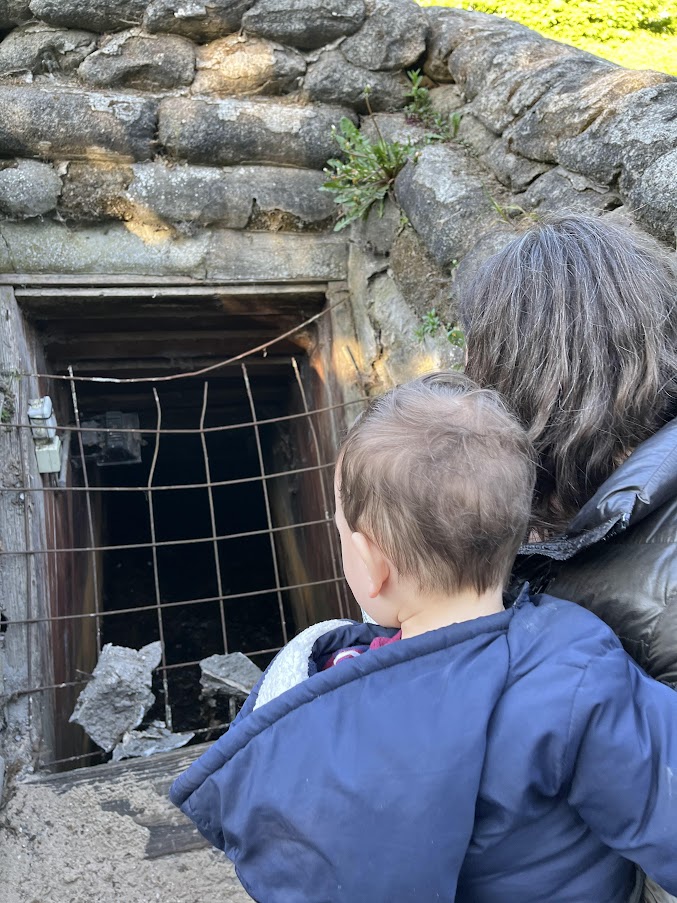

The Yorkshire Trench is not the most complete or best preserved of the trenches, but it has a fascinating history and is well worth a visit if you are in the area.
It is located next to an industrial site and can be easy to miss as you’re driving through the area. There is no cost for visiting these trenches.
Sanctuary Wood (Hill 62)
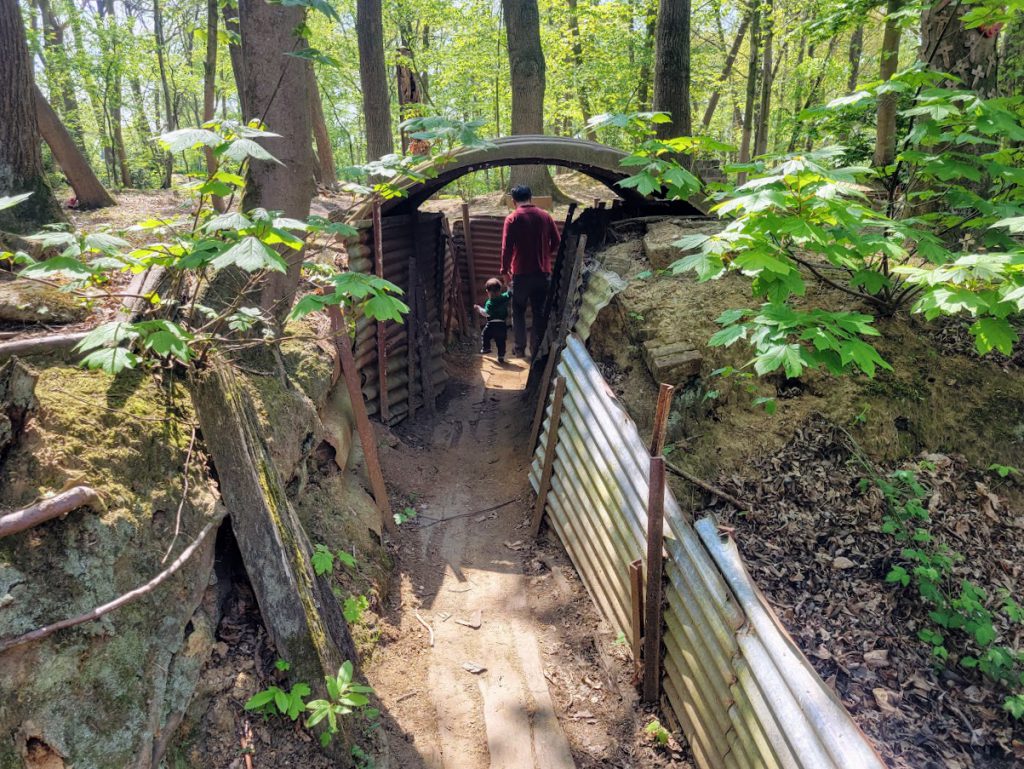

As one of the best-preserved systems of trenches from WWI, Sanctuary Wood (also referred to as Hill 62) is a place you absolutely must visit while in Ypres.
The trenches located here are part of the former British trench system that marked the front line for four years of the war.
While most of the other trenches in the area were covered and converted back to farmland after the war, this section was largely left undisturbed when the owners returned to their land. In this quiet wood you can find trenches, tunnels, and earth still pockmarked by artillery fire.
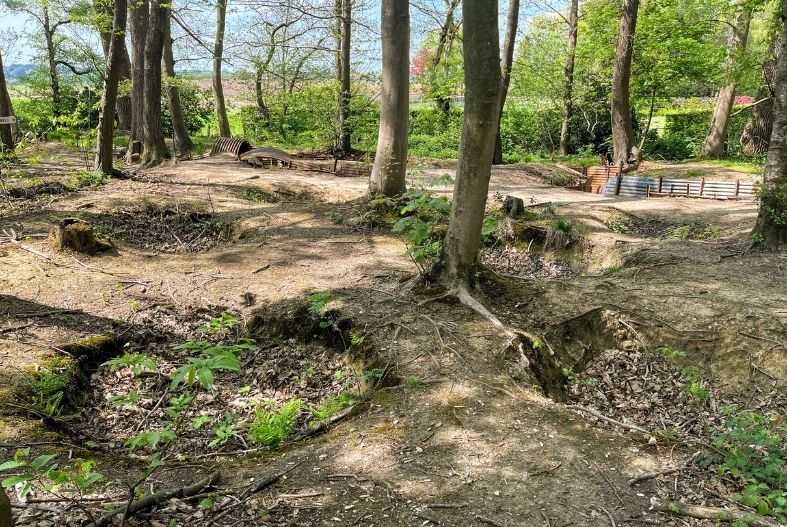

It’s a solemn place to visit, one where you can clearly visualize the gritty reality and terrors associated with trench warfare. There’s something about actually walking through the trenches that gives you a new perspective on a war that previously perhaps felt more distanced.
While we were there we had the whole place to ourselves and were able to take our time to explore the woods in peace.
Also located at this location is a small museum, which contains artifacts from the war, including weapons, uniforms, and daily use items.
There’s also a room which is full of stereoscopic viewers to view a wide array of old photos from the war that were taken on the front line. These rare photos showed clearly the brutality and destruction of the war as well as the realities of everyday life in the trenches. The pictures were extremely riveting and we found it hard to pull ourselves away from the displays. Be aware that many of the photos are quite graphic, so be mindful if you are visiting with children.
This is privately owned land and purchase of a ticket is required to access the museum and the trenches. We found experience to be well worth the cost of admission.
If you’re only visiting one of the Ypres battlefields, this is a great choice.
Hill 60
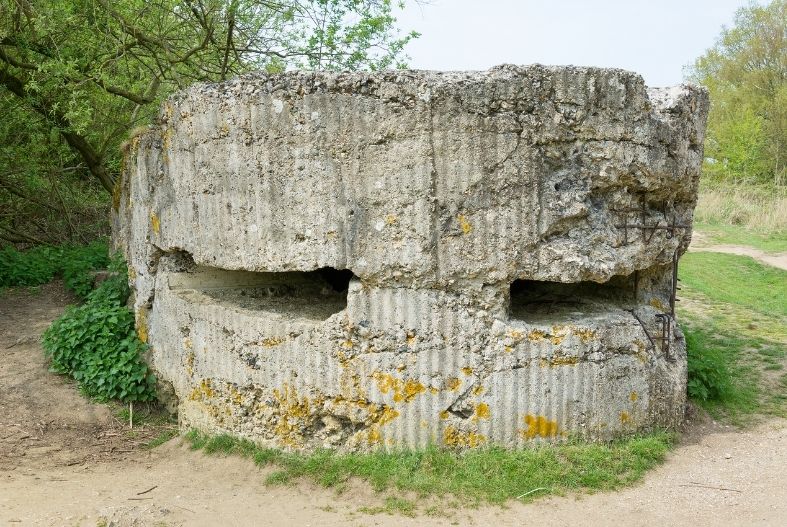

Another of the Ypres battlefields, Hill 60 is an elevated ridge that changed hands between the Germans and Allies many times during the war, with incredible loss of life. This strategically significant hill provided unobstructed views of the area, making it the focus of many campaigns.
Today the evidence of the war has been largely erased by time. However, you can still see the massive craters that are the result of mines set off at various times during the war by both sides. One of the most significant craters was formed at the start of the Battle of Messines when the British detonated mines in tunnels dug underneath the German position, creating an enormous crater and taking the lives of thousands of German soldiers.
This entire area is considered a mass grave to the many soldiers who were buried in this hill and should be treated with respect and reverence.
At the site you can also see the remains of a pillbox and several bunkers, one of which has been mostly preserved.
There are information displays at the site, but it’s worth it to read up on the history of the area before going so that you can have a good understanding of what happened at this historical site.
Cemeteries and Memorials
Due to the sheer number of battles in the area, there are many, many memorials and cemeteries located in the region. We can’t possibly cover all of them, so we’ll list just a few of significance, although all are worth visiting.
Essex Farm Cemetery and Dressing Station
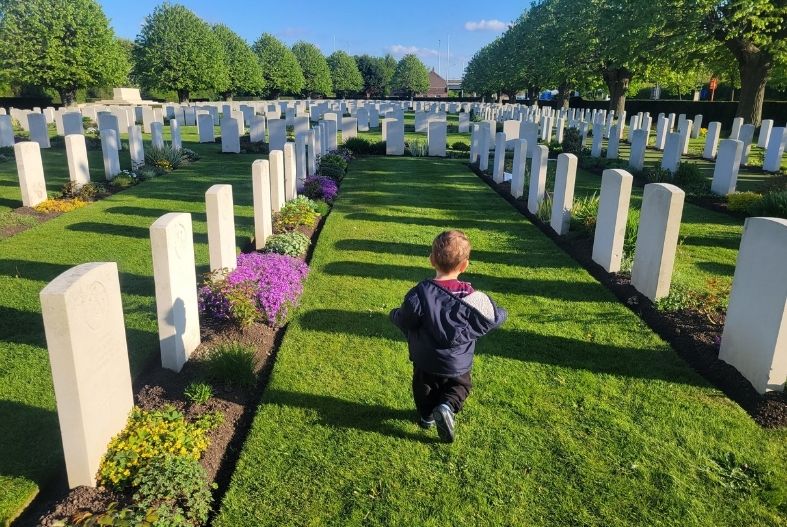

In this cemetery you will find the graves of 1,185 soldiers killed during the war. One of the graves marks the resting place of a 15 year old boy, one of the youngest soldiers to die in the war. Behind the cemetery is the 49th Division Memorial.
The cemetery grounds are beautifully kept and it’s a lovely place for quiet reflection.
Next to the cemetery are concrete bunkers which were used as a dressing station. It was in one of these bunkers that John McCrae, a Canadian military doctor, penned his famous poem “In Flanders Field”.


McCrae wrote the poem in May of 1915 after fighting in the Second Battle of Ypres, which he described as a “nightmare”. The day before he wrote the poem he had buried a close friend who had died in the battle. His reference to poppies in the poem led to the flower becoming a widely recognized symbol of WWI.
Menin Gate and Last Post
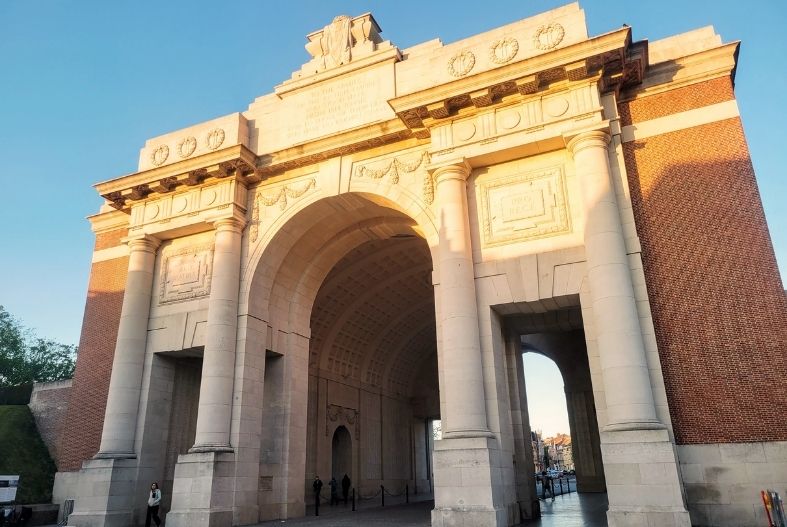

Menin Gate is one of the four memorials to the missing in Ypres Salient, dedicated to the soldiers who lost their lives but whose bodies were never found. This memorial is specifically dedicated to the British and Commonwealth soldiers who fought in the area, and inscribed on the memorial are the names of over 50,000 soldiers with unknown graves.
The Menin Gate is a massive arch spanning one of the main roads leading out of town. It symbolically represents a gateway for the hundreds of thousands of soldiers who passed that way on their way to the war, many never to return.
Every evening at 8 pm, traffic is halted and crowds gather to hear a group of buglers play the Last Post under the Menin Gate. This is a way to remember the fallen and pay tribute to their ultimate sacrifice.
The Last Post ceremony also typically involves a minute of silent remembrance, the Exhortation, the laying of wreaths, the Lament, and reveille. The whole ceremony is usually finished in about 15 or 20 minutes.
You can attend the ceremony free of charge, but you’ll want to arrive early to get a spot where you can see the proceedings. In the summer the crowds can swell to as many as 1,000 people, so plan on being there well in advance if you want to be able to see anything.
We were there 15 minutes early and the mass of crowds made it impossible for a short person such as myself to see. It was still a meaningful and moving experience, but if I were to go again I would plan on being there at least an hour in advance to secure a spot up front.
Tyne Cot Memorial and Cemetery
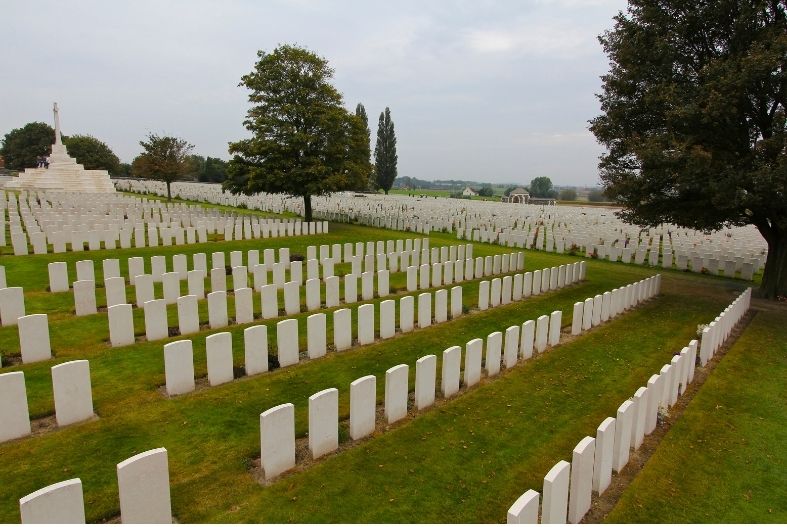

Tyne Cot Memorial is another of the four memorials to the missing in the Flanders region. On this memorial you can find the names of 35,000 soldiers with unknown graves.
Next to the memorial is the beautiful and somber Tyne Cot Cemetery.
In the Tyne Cot Cemetery, 11,961 soldiers are buried, making it the largest Commonwealth war cemetery in the world. Also in the cemetery you can see the Cross of Sacrifice and several pillboxes left over from the war.
Like the other cemeteries in the area, the grounds are meticulously kept. The sheer number of tombstones is quite a sight to behold and really puts into perspective the tragedy of the war.
Saint Julien Memorial (Brooding Soldier)
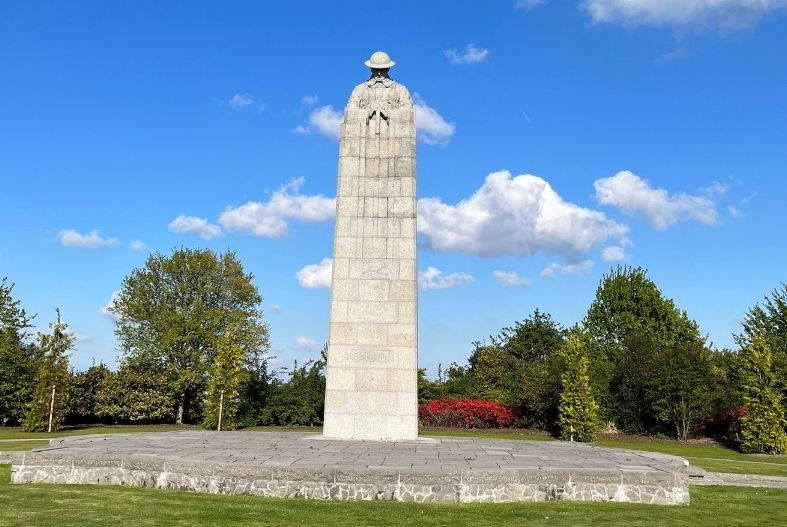

The Saint Julien Memorial, also known as the Brooding Soldier, is a memorial to the Canadian First Division. This courageous group of soldiers fought during the Second Battle of Ypres and faced the first attacks using poisonous gas in WWI. Two thousand of the Canadian soldiers died during the attack and were buried there.
The impressive granite statue stands 36 feet tall, a tribute to the lives of those brave soldiers. This memorial and garden is a nice place to spend a few quiet moments as you ponder on the heavy toll of the war.
Museums
While you’re in Ypres, make sure to set aside some time to visit the informative museums to get a background of the war and the history of the city itself.
In Flanders Field Museum
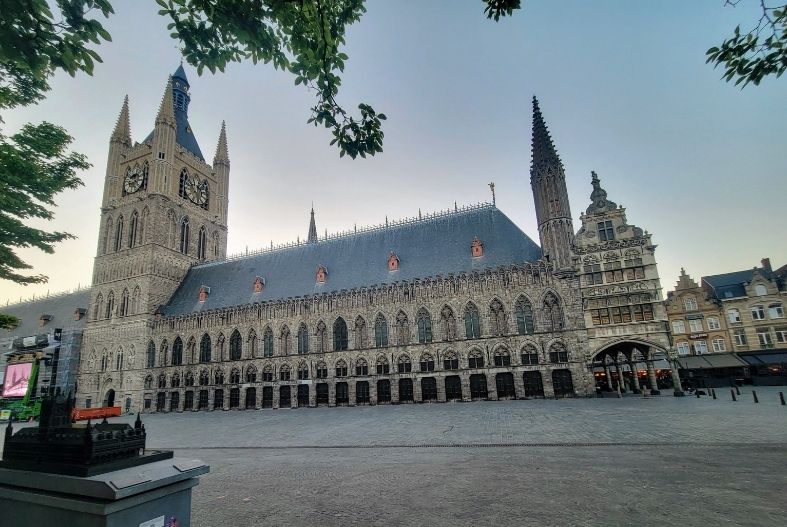

The largest WWI museum in Belgium, In Flanders Field Museum is a must-see for anyone interested in history (which hopefully you are if you’re visiting Ypres!). A visit to the museum is a great way to start your trip to Ypres, as it provides meaningful context for the other significant sites in the area.
Located in the historic Cloth Hall, the museum provides a comprehensive look at the war in the Flanders region, from the details of the campaigns to the everyday lives of the soldiers to the impact on the locals who were displaced.
I especially loved the video displays of actors dressed in period clothing reading excerpts from the journals of Allied and German soldiers. It felt like you were hearing first-hand from the soldiers about their experiences in the field.
The museum is riveting, and you’ll want to plan at least two to three hours to make your way through all the exhibits.
I highly recommend getting the audio tour, as it provides additional details to supplement what you see in the informational placards. It’s an extra charge, but well worth the cost in my opinion.
Climb the Belfry


Halfway through the In Flanders Field Museum, you’ll find the entrance to the belfry. It’s an additional charge of €2 to climb the belfry, which you will pay when you purchase your ticket for the museum.
It’s a great way to break up your time in the museum and if you can make it up the 300 steps, at the top you have stunning views of Ypres and the surrounding area. The stairs get quite steep at the top, so beware if you’re scared of heights.
After learning more about the war in the museum, it feels significant to look out over the landscape and think of the destruction which razed the entire city to the ground during the war.
Yper Museum
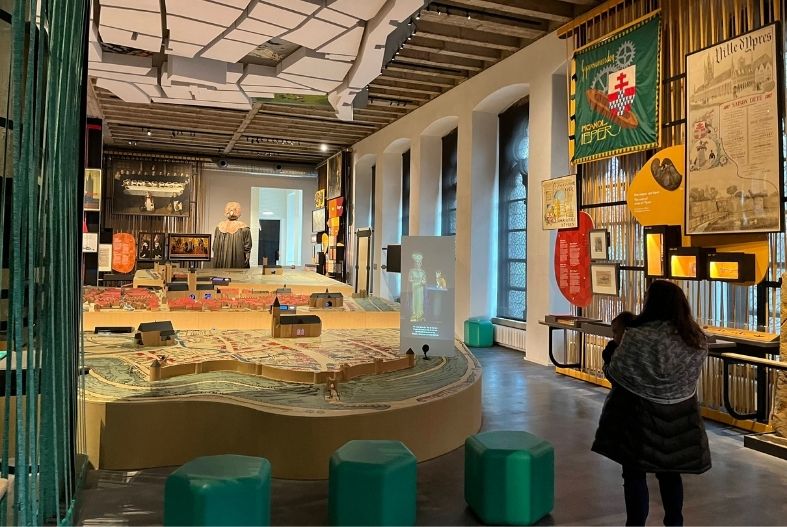

The Ypres Museum is not focused on WWI, but instead gives a history of Ypres itself. This museum is the perfect break from the heavier war museums and is a wonderful place to visit with children.
The museum is located in the same building as the In Flanders Field Museum. When you enter, you are given a wristband that allows you to interact with displays and play games.
Children have specific bands that allow them to accumulate points and win a prize at the end (the staff said they are very lenient and will provide a prize either way).
The museum provides details about the history and customs of Ypres throughout the ages in an engaging and often humorous way.
You can purchase a combination ticket for both the Yper Museum and the In Flanders Field Museum for a discounted rate.
Passchendaele Museum
The Passchendaele Museum is located about a 12 minute drive from the city center. This interactive museum details the history of the war in Ypres, with a particular focus on the Third Battle of Ypres, also called the Battle of Passchendaele.
Known as one of the bloodiest battles in WWI, over the course of the Battle of Passchendaele nearly 600,000 soldiers died for a gain of less than five miles.
If you’re going to pick only one museum to visit in Ypres, this should be it, especially if you’re traveling with children. This museum brings the war to life through videos, artifacts, and immersive experiences.
One of the best parts is the opportunity to walk through a life-size replica of a dugout, which really allows you to feel what it must have been like for soldiers living in those conditions. There are also reconstructed trenches that you can walk through, which show the progression of trench construction throughout the war and the differences between the Allied and German trenches.
There’s a special audio tour just for children which provides them with age-appropriate materials and fun tasks to accomplish within the museum.
Plan to spend an hour and a half to two hours for the museum, plus extra time to explore the memorial gardens outside.
Other significant sights and things to do
In addition to the Ypres battlefields and WWI sites, Ypres itself, with its cobblestone streets and charming architecture, is a lovely place to spend some time. Make sure you take some time to wander the Grote Markt and grab a bite to eat at one of the eateries lining the square.
Saint Martin’s Cathedral
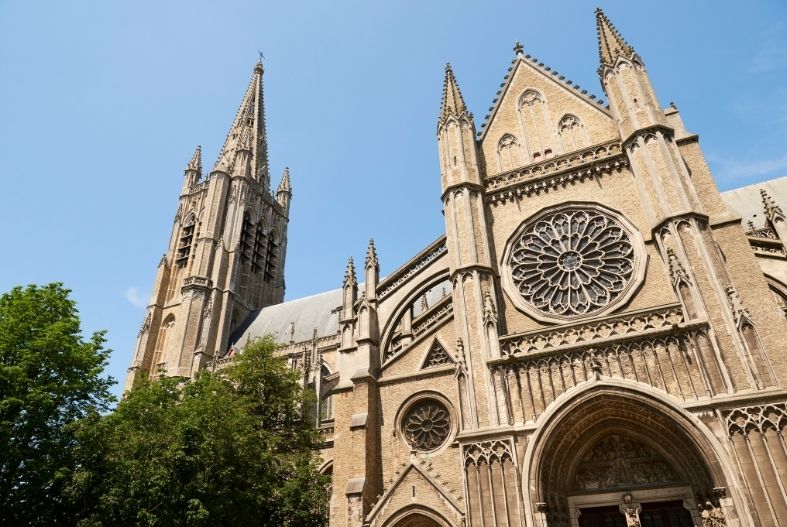

Standing at 335 feet, this imposing cathedral is one of the tallest buildings in Belgium.
The church was originally built in the 12 and 13th centuries, but was completely destroyed during WWI, like much of the rest of the city.
After the war, the cathedral was rebuilt to look exactly like the original building, with the only change being to make the spire taller.
The church is located in the city center next to the In Flanders Field Museum. It’s worth the time to spend a few minutes inside admiring the gothic architecture, stained glass windows, and towering ceilings.
Indulge in some chocolate


And of course, since you’re in Belgium you should probably stop for some chocolate while you’re there.
We tried several of the chocolate shops near the center square and I had some of my favorite chocolate of the trip from a small chocolaterie we found there called Vandaele. The chocolate was delicious and the owner was very friendly and helpful.
Common Questions
How to get to Ypres
Unlike many of the main cities in Belgium, Ypres is not a place that is particularly easy to explore using public transportation. Although there is a bus system, the buses aren’t very convenient for visiting the war sites.
One of the best ways to get around Ypres is to rent a car. We rented a car from Bruges and drove from there to Ypres. With our own car we were able to get around easily and follow our own schedule. We found the rural roads to be easy to navigate, despite it being our first time driving in Belgium (getting out of busy Bruges was a bit more stressful, but manageable).
The other option is to join a tour group. You can set up a tour in Ypres or join a day trip tour from Bruges. I would recommend trying to spend the night in Ypres if possible, given that there is so much to see in the area.
Where to stay in Ypres


If you’re looking for a conveniently-located and reasonably priced hotel in Ypres, consider Novotel. This hotel is located right in central Ypres, only a two minute walk from the city center. It’s also a four minute walk from Menin Gate, making it a perfect place to stay if you want to attend the Last Post ceremony.
We enjoyed our stay at Novotel, especially the central location and friendly staff.
Note that there is free overnight parking down the street in front of the church.
How long should I spend in Ypres?
In order to see the best of what Ypres has to offer, plan on spending at least two days in the city.
While Ypres is commonly visited as a day trip, one day really is not enough time to see the main historic sites in the area, especially if you’re planning on visiting some of the museums (which you should definitely do, as they are excellent).
Another compelling reason to stay overnight in the area is so that you can easily attend the Last Post, which starts at 8 pm each night. It’s much more convenient to attend the bugle ceremony if you have a hotel nearby instead of having to make the trip back to Bruges or on to another destination.
Is Ypres worth visiting?
So now to the real question: is Ypres actually worth visiting? Our answer to that would be a resounding yes! Ypres is definitely worth the trip, especially for history enthusiasts. As the site of some of the most significant battles of WWI, the area is steeped in a rich and meaningful history.
From the fascinating museums to the somber Ypres battlefields to the charming and historic city itself, there is so much to see and do while visiting Ypres.
We were so glad that we decided to add this small but influential town to our itinerary and hope to be able to come back to visit again in the future.
If you’re planning on visiting Belgium, be sure to include a trip to historic Ypres. You won’t be disappointed!
Other posts you might be interested in:

